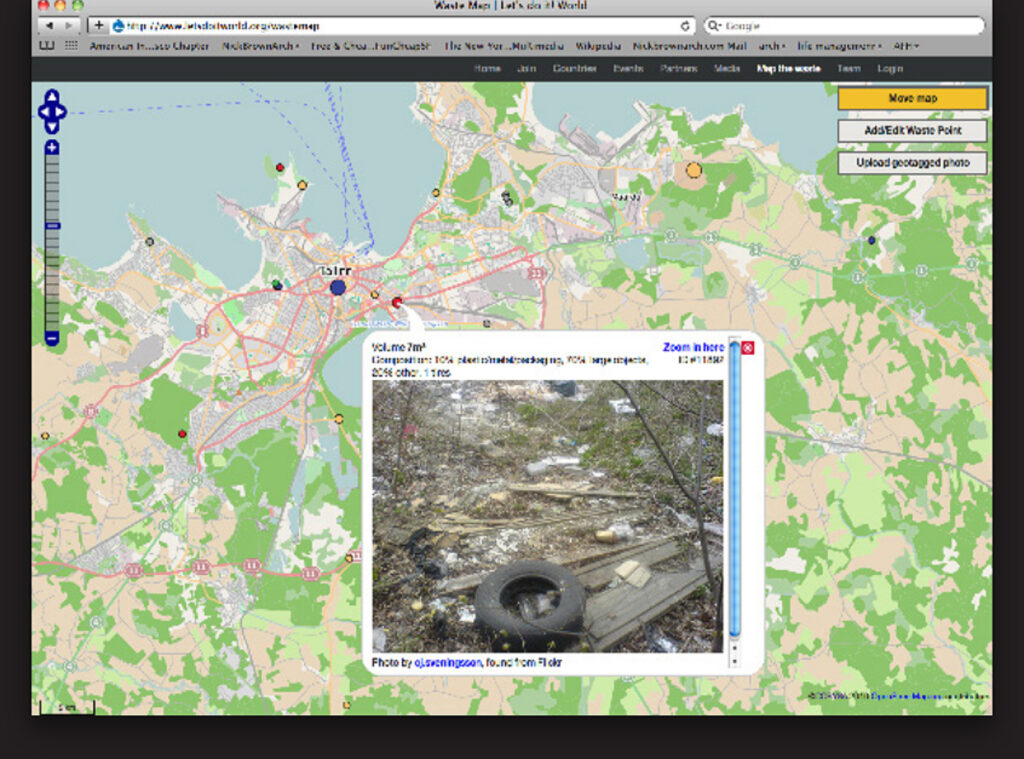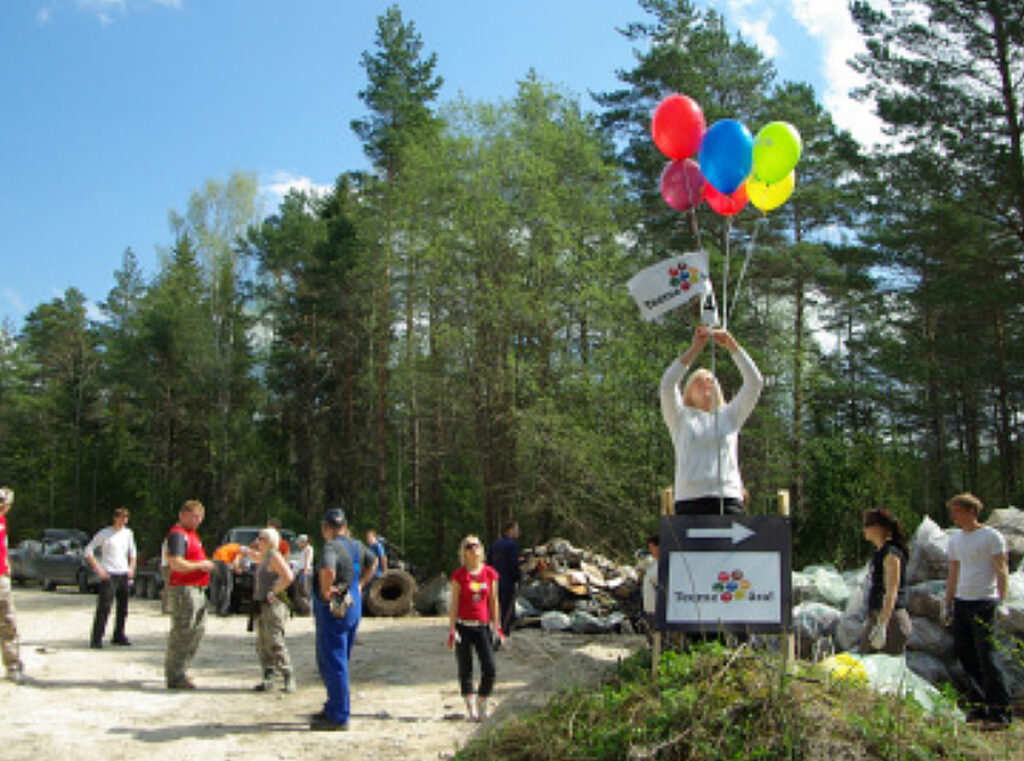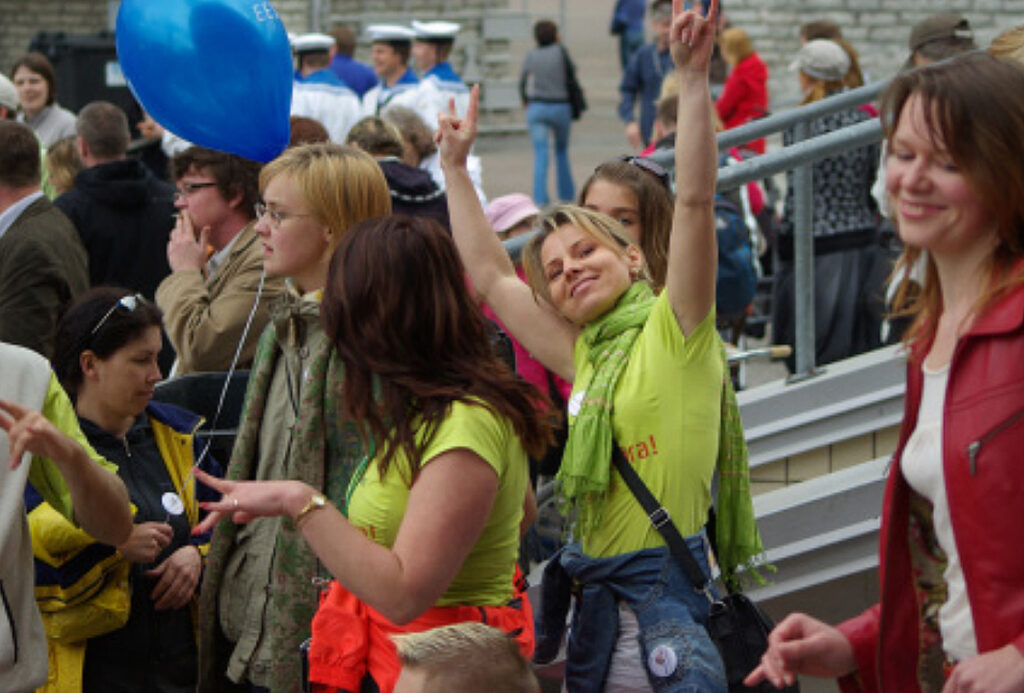| Location | Estonia |
| Planning | 2007-8 |
| Date | May 3, 2008 |
| Implementing Agencies | 227 local governments in estonia |
| Program Design | Rainer Nõlvak, Toomas Trapido, Kadri Allikmäe, Henri Laupmaa |
| Project Partners | Ahti Heinla, Eva Truuverk, Tiina Urm, Anneli Ohvril, Tatjana Lavrova, Agni Kaldma, Birgit Tolmann, Jüri-Ott Salm |
| Funder | Ministry of the Environment |
| Supporters | Eesti Energia; Elion; Estonian Army; Estonian Energy; Estonian Environmental Inspection; Estonian Fund For Nature; Estonian Map Centre, Ltd.; EMT; Estonian National Broadcasting Company; Environmental Investment Centre; State Forest Management Centre; Hansabank; Nokia; Nutiteq (over 500 partners) |
| Cost | €500 000/$719 000 USD |

Screenshot of map from Let’s Do It! Website. Image: Letsdoitworld.org
In the summer of 2007, Toomas Trapido, a member of the Estonian parliament, sat down with Rainer Nõlvak, an information technology entrepreneur and then-chairman of the Estonian Fund for Nature, to discuss collaborating on environmental projects. [Trapido’s first slide] laid out a plan to clean up the numerous illegal dumping sites around the country over several years. Nõlvak immediately supported the idea, and suggested they organize a country-wide cleanup in a single day.
Over the course of the next few months, as they added important partners such as the Estonian National Broadcasting Company, the State Forest Management Centre, and the Ministry of the Environment, to name a few, the concept started to become a reality. “Garbage in forests, seashores and other public spaces touches lots of people deeply,” explained Trapido, emphasizing that it is also “a problem that everybody can help solve.” To support the cleanup, waste management companies agreed to waive all fees except for transportation expenses. Additionally, 80 percent of the trash haul was diverted for recycling.
Before they could start picking up trash, however, they first had to locate it. Over 700 volunteers mapped 10 656 sites using global positioning system (GPS) enabled cell phones donated by Nokia. The sites were uploaded to a Google Earth-based program written by Ahti Heinla, a founder of Skype. Uploading photos was considered, but decided against because it could be difficult, expensive and unreliable. And besides, said Heinla, “mapping using mobile phones is the easiest method to use.”
Mapping was key to generating public support. As Tiina Urm, now a member of the international Let’s Do It! team, explains that the problem was that nobody knew how bad the illegal dumping really was. The GPS software “made it possible to put the garbage on the map,” Urm says. “That was the first time people could see the face of the problem.”
To ensure that the sites would get cleaned up, the Let’s Do It! team sought the support of each one of the 227 local governments in Estonia. Only seven did not participate, and they subsequently executed their own public cleanup days due to public pressure.


left and right image: Photos from the Let’s Do It! 2008 clean up in Estonia. Photo: Tonis Valing/Let’s Do It! World
















READ OR LEAVE A COMMENT